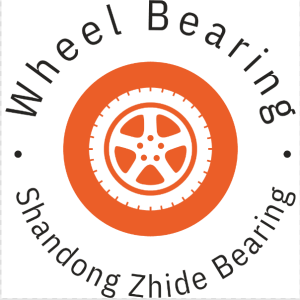What is a release bearing and the use of clutch release bearings
Bearing ablation damage phenomena and common causes
The release bearing is the bearing used between the clutch and the transmission. Usually, we call it “clutch release bearing”. When the clutch is stepped on, if the shift fork is combined with the clutch pressure plate that is rotating at high speed, a bearing must be needed to eliminate the heat and resistance generated by direct friction, so the bearing installed at this position is called a release bearing. The release bearing pushes the pressure plate to separate from the friction plate and cuts off the power output from the crankshaft.
Clutch release bearing performance requirements:
The release bearing should move flexibly without making sharp sounds or sticking phenomena. Its axial clearance should not exceed 0.60mm, and the wear of the inner race should not exceed 0.30mm.
Working principle and function of clutch release bearing:
The so-called clutch, as the name suggests, uses “off” and “on” to transmit the appropriate amount of power. The engine is always spinning, but the wheels are not. To stop the vehicle without damaging the engine, the wheels need to be disconnected from the engine in some way. The clutch allows us to easily connect a spinning engine to a non-rotating transmission by controlling the slip between the engine and transmission.
The clutch release bearing is installed between the clutch and the transmission. The release-bearing seat is loosely sleeved on the tubular extension of the first shaft-bearing cover of the transmission. The return spring keeps the shoulder of the release bearing against the release fork and retreats to the final position. , and keep a gap of about 3~4mm with the end of the separation lever (separation finger).
Since the clutch pressure plate and separation lever operate synchronously with the engine crankshaft, and the separation fork can only move axially along the clutch output shaft, it is obviously not possible to directly use the separation fork to move the separation lever. The separation lever can be rotated through the release bearing. The clutch output shaft moves axially, thus ensuring smooth clutch engagement and gentle separation, reducing wear and extending the service life of the clutch and the entire drive train.
Key points to note when using the clutch release bearing:
1. Follow the operating regulations to avoid the half-engaged and half-disengaged state of the clutch and reduce the number of times the clutch is used.
2. Pay attention to maintenance. During regular or annual inspection and maintenance, use the steaming method to soak the butter so that it has sufficient lubricant.
3. Pay attention to leveling the clutch release lever to ensure that the elastic force of the return spring meets the requirements.
4. Adjust the free stroke to meet the requirements (30-40mm) to prevent the free stroke from being too large or too small.
5. Minimize the number of joints and separations and reduce impact loads.
6. Tread lightly and easily to make it connect and disconnect smoothly.

Common factors that cause damage to the clutch release bearing during use:
1. Working conditions and stress of clutch release bearing
During use, the release bearing is affected by axial load, impact load, and radial centrifugal force during high-speed rotation. In addition, because the thrust of the shift fork and the reaction force of the release lever are not in the same straight line, a torsional moment is also formed. The clutch release bearing has poor working conditions. It rotates intermittently at high speed and is subject to high-speed friction. It has a high temperature, poor lubrication conditions, and no cooling conditions.
2. Causes of damage to clutch release bearing
The damage to the clutch release bearing is closely related to the driver’s operation, maintenance and adjustment. The causes of damage are generally as follows:
1) Overheating occurs when the working temperature is too high
Many drivers often half-depress the clutch when turning or decelerating, and some put their foot on the clutch pedal after shifting into gear. Some vehicles have excessive free travel adjustment, causing the clutch to be incompletely separated and in a half-engaged and half-disengaged state. This state Dry friction causes a large amount of heat to be transferred to the release bearing. The bearing is heated to a certain temperature, and the butter melts or dilutes and flows, further increasing the temperature of the release bearing. When the temperature reaches a certain level, it burns out.
2) Wear due to lack of lubricating oil
The clutch release bearing is lubricated with butter. There are two ways to add butter. For the 360111 release bearing, the back cover of the bearing should be opened and filled with grease during maintenance or when the transmission is removed, and then reinstall the back cover. Just put it together; for the 788611K release bearing, it can be removed and soaked in melted grease, and then taken out after cooling to achieve the purpose of lubrication. In actual work, drivers tend to ignore this point, causing the clutch release bearing to be short of oil. In the case of no lubrication or little lubrication, the wear amount of the release bearing is often several to dozens of times greater than the wear amount after lubrication. As wear increases, the temperature will also increase significantly, making it more susceptible to damage.
3) The free stroke is too small or the number of loads is too many
According to the requirements, the clearance between the general clutch release bearing and the release lever is 2.5mm, which is reflected in the free travel on the clutch pedal of 30-40mm. If the free travel is too small or there is no free travel at all, the separation lever will be in contact with the release lever. The release bearing is in a normally engaged state. According to the principle of fatigue damage, the longer the bearing works, the more serious the damage will be; the more times it is loaded, the easier it is for the release bearing to suffer from fatigue damage. Moreover, the longer the working time, the higher the temperature of the bearing, and the easier it is to burn out, which reduces the service life of the release bearing.
4) In addition to the above three reasons, whether the separation lever is adjusted smoothly and whether the return spring of the release bearing is good will also have a great impact on the damage of the release bearing.
Maintenance of clutch release bearing:
Fix the inner ring of the release bearing by hand, rotate the outer ring, and apply pressure in the axial direction at the same time. If there is any blockage or obvious gap feeling, the release bearing should be replaced. Release bearings are usually filled with grease once. Do not disassemble and clean at will during maintenance. If there is any dirt, wipe the surface with a clean rag. as the picture shows.
Ablation damage phenomenon and common causes of clutch release bearing
(The dragon that runs the world’s great power, the dragon emerges from the east, and reaches the world, the dragon’s third type of spherical roller bearing Liu Xingbang C E MB MA)
For example, in a Dongfeng agricultural vehicle, the engine is difficult to start when the clutch pedal is depressed. If you crank the crankshaft with a crank, it feels very heavy. Only by releasing the clutch pedal and shifting into neutral can the engine be started smoothly. When the engine is idling, as long as the clutch pedal is depressed, the engine will shut down immediately.
Stop and check with the engine turned off, depress the clutch pedal, and turn the driven plate. The driven plate can rotate freely and other parts are not damaged. Turn the clutch release bearing and find that the release bearing cannot move. After disassembly and inspection, it was found that the release bearing was ablated due to poor lubrication, and its inner and outer rings, retainers, and other parts were severely ablated and locked. Not only could the bearing not rotate during operation, but it also produced large friction with the clutch release lever. Abnormal noises occur, making it difficult to start the engine.

Common causes of release-bearing damage include:
1. Although the release bearing has been filled with grease when it leaves the factory, after long-term use, especially after encountering high temperatures, the grease melts and is gradually shed during the operation of the bearing. The bearing generates heat due to dry friction, resulting in Ablation, stuck, and loss of separation effect.
2. Some drivers are accustomed to using a half-foot clutch, which puts the clutch in a semi-engaged and semi-disengaged state, causing dry friction in the clutch and transferring heat to the release bearing, causing the grease in the bearing to become thinner and lost. When the temperature reaches a certain value, the bearing Ablative damage.
3. During vehicle maintenance, the small oil bottom is omitted or lost, causing mud to invade the release bearing and causing bearing wear.
4. The free stroke of the clutch pedal is too small or absent, causing it to be in a state of constant engagement, causing fatigue damage or even ablation; the pedal stroke is too large, causing incomplete clutch separation and difficulty in shifting gears, and the clutch is in a half-engaged and half-separated state, resulting in Due to dry friction, heat is transferred to the release bearing, causing the grease to run out and the bearing to ablate.
5. After the release bearing is eroded by dust, the grease will deteriorate, aggravating its damage.
6. The release bearing and the release sleeve have poor fit, especially the fit gap between the two is too large, loose, and not in the same plane. The release bearing is subject to impact loads during operation, causing wear and ablation of the track.
The release bearing should rotate flexibly without abnormal noise. The axial clearance must be m.0.6mm), and the wear of the inner race should not exceed 0.3mm, otherwise it should be replaced with a new one. The matching clearance between the pedal shaft, separation fork, and bushing is too large. Generally, the bushing should be replaced and cut to fit. When cutting the two bushings on the bracket, a long-edged knife or a knife with a guide device must be used to ensure their coaxiality.
When the engine is idling, depress the clutch pedal. If you hear a “sand” or “squeak” sound, lift the clutch pedal and the sound disappears, then depress it a little (to make the release bearing contact the release lever). If the friction sound reappears, it means that the clutch release bearing is short of oil or worn.
When disassembling and inspecting the release bearing, first unscrew the release lever fixing screws and bolts from the transmission housing, remove the release lever, remove the release bearing assembly and fixed spring, and then use a puller to pull the release bearing off the release bearing seat. Check the release bearing. If it is short of oil, it should be replenished. If it is worn, it should be replaced. When assembling the release bearing, apply an appropriate amount of lithium molybdenum disulfide-based grease on the release bearing seat as indicated by the arrow. The amount should not be too much to avoid contaminating the driven plate.
The release bearing generally uses an axial thrust ball bearing, which is press-fitted on the release sleeve. Grease or engine oil is regularly added through a special oil nozzle installed on the flywheel housing to lubricate the working surface of the release sleeve and the release bearing. Some release bearings use well-sealed pre-lubricated bearings. They are not allowed to be cleaned with gasoline during disassembly and assembly, and there is no need to add lubricant, just wipe them clean.



